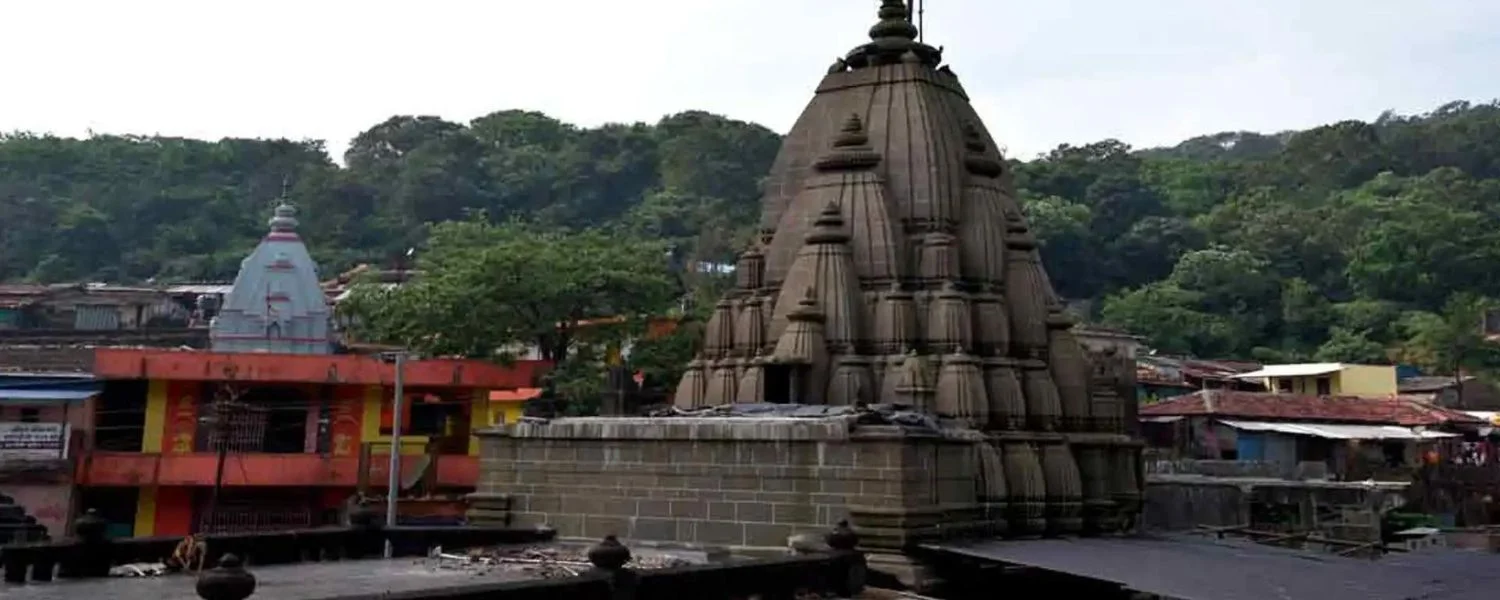I’ll admit it—I almost didn’t go. When my friend Ravi suggested adding Bhimashankar temple to our Maharashtra temple tour, I groaned. “Another temple?” I thought. We’d already visited Shirdi and Pandharpur, and I was ready for a beach break in Goa. But Ravi, with that knowing smile he gets when he’s about to prove me wrong, said, “Trust me. This one’s different.”
Three hours later, as our car wound through the Western Ghats, the air grew cooler and the forest denser. The scent of wet earth and pine filled the car, and the honking of city traffic was replaced by birdsong. When we finally arrived, the temple wasn’t what I expected—no grand entrance, no crowds of selfie-taking tourists. Just a simple stone structure nestled in the forest, with the sound of chanting blending with the rustling of leaves.
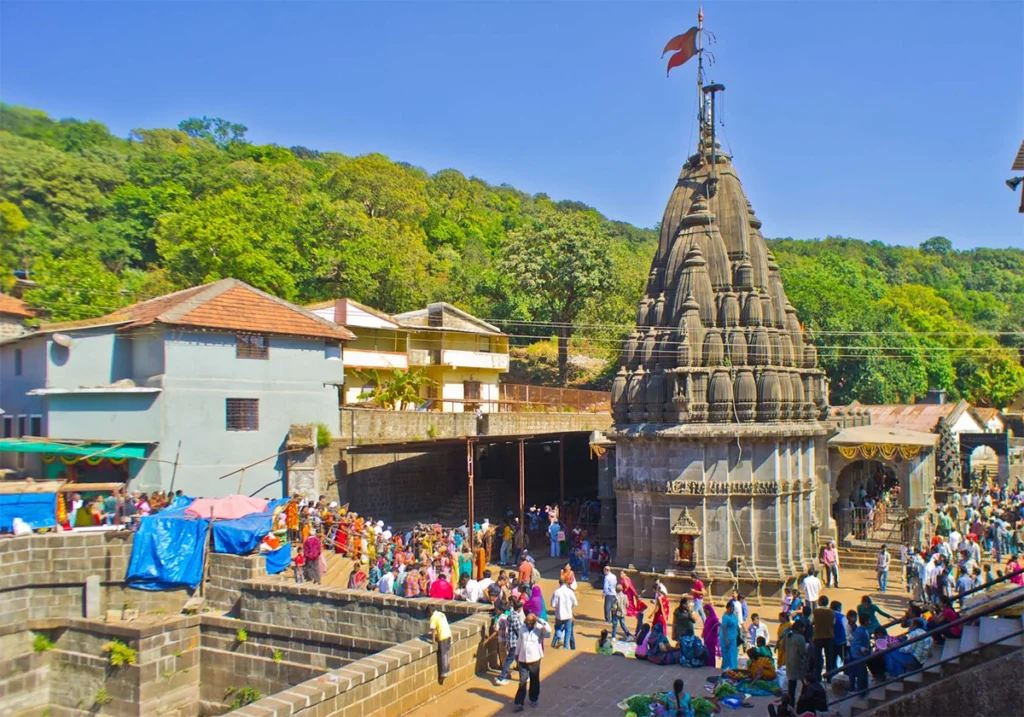
As I stepped out of the car, bare feet meeting cool stone, something shifted. The air felt charged, like before a thunderstorm, but peaceful. An elderly woman sitting by the entrance caught my eye and gestured for me to sit with her. Without a word, she handed me a cup of chai and pointed toward the temple. “Listen,” she said simply.
And I did. Not just to the chanting, but to the forest itself—the birds, the wind through the trees, the distant sound of water. In that moment, I understood why Ravi had insisted I come. This wasn’t just another stop on a pilgrimage in India; this was a living conversation between the divine and the natural world.
Why Bhimashankar Isn’t Just Another Temple
Bhimashankar is one of the twelve Jyotirlingas—the most sacred Shiva temples in India. But what makes it special isn’t just its status; it’s its setting. Unlike the grand urban temples I’d visited, Bhimashankar feels like it grew from the earth itself, surrounded by dense forest and the source of the Bhima River.
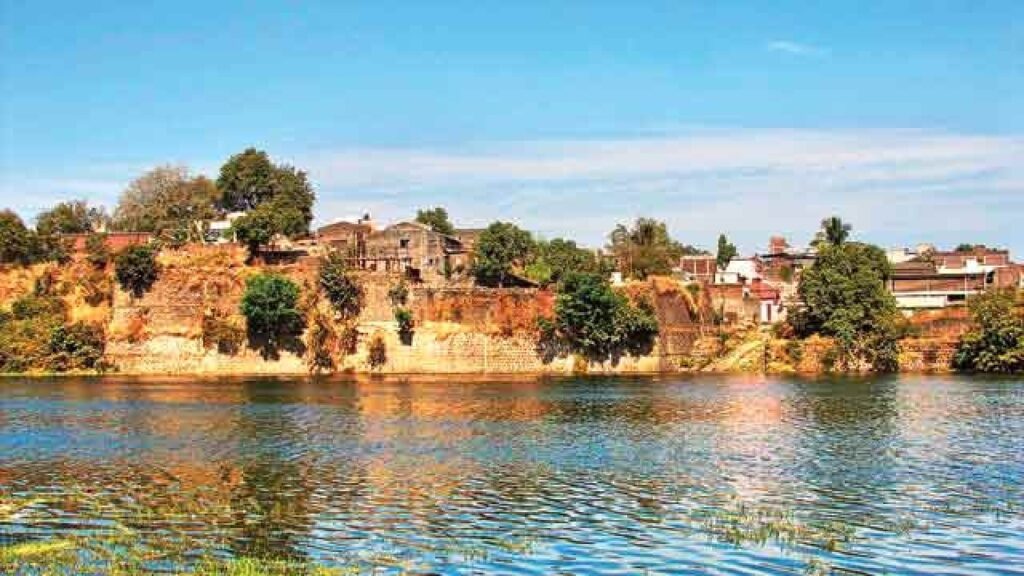
Most people think of temples as places to visit, but Bhimashankar feels like a place that visits you. The moment you enter the complex, the city noise disappears. Instead, you hear:
- The gentle ringing of temple bells
- The rustling of leaves in the ancient banyan trees
- The distant sound of the river
- The soft chanting of priests and pilgrims
What struck me most was how integrated the temple is with the forest. Deer wander through the courtyard. Monkeys sit quietly on the temple walls. During my visit, I watched as a group of sadhus performed their morning rituals while a family of langurs observed from the trees—nature’s silent congregation.
As the head priest explained to me, “Shiva isn’t just in the stone lingam here. He’s in the river, the trees, the mountains. This is why people come—not just for darshan, but for the forest’s blessing.”
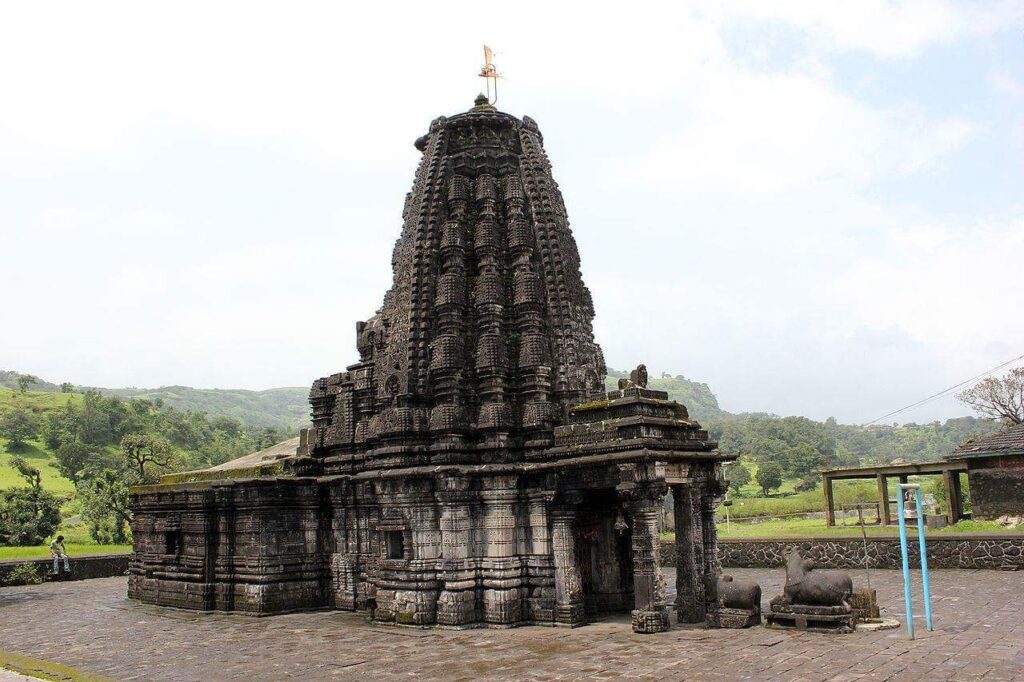
The Legend That Gives Bhimashankar Its Name
The story behind Bhimashankar is one of the most fascinating I’ve heard on my spiritual journey through India. It connects the epic Mahabharata with the divine manifestation of Shiva.
According to legend, a demon named Tripurasura received a boon from Brahma that he could only be killed by a single arrow. With this protection, he began terrorizing the three worlds. The gods turned to Shiva for help, and he agreed to destroy the demon.
But there’s a twist: Tripurasura was actually the son of the demon Tarakasura, whom Bhima (one of the Pandava brothers) had killed in a previous battle. When Tripurasura learned of his father’s death, he performed intense penance to gain the boon from Brahma.
Shiva took the form of a young boy and approached Tripurasura, saying, “I’ve heard you’re invincible. Can you lift this small stone?” The demon, arrogant with his power, tried to lift it but couldn’t. In that moment of vulnerability, Shiva revealed his true form and destroyed Tripurasura with a single arrow.
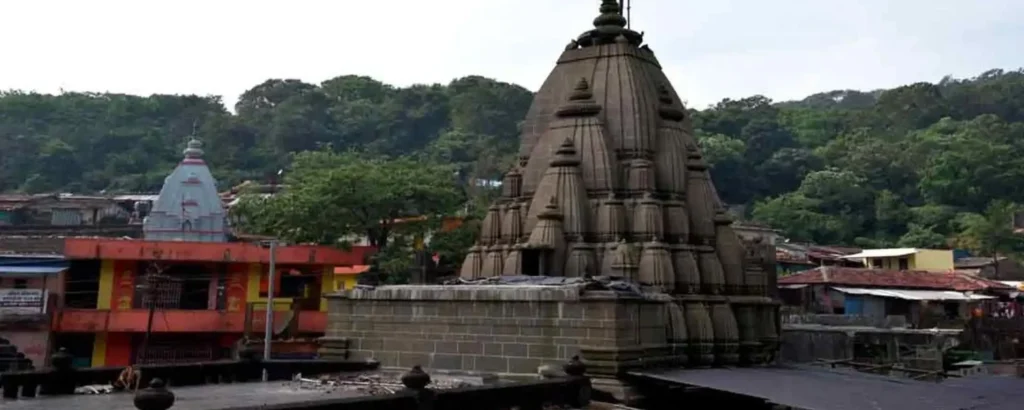
The place where this happened became known as Bhimashankar—”Bhima” referring to the Pandava connection, and “Shankar” being another name for Shiva.
What makes this story special is how it’s woven into the landscape. During my visit, a local guide showed me the exact spot where Tripurasura tried to lift the stone (now a small shrine), and the cave where Shiva manifested (accessible only during certain rituals). The forest itself feels like a living storybook, with each tree and rock holding a piece of the legend.
A Temple Born from Nature
Unlike many famous temples that were constructed with elaborate plans, Bhimashankar feels like it emerged naturally from the landscape. The temple structure itself is relatively modest compared to other Jyotirlinga temples, but what it lacks in grandeur it makes up for in spiritual intensity.
The architecture follows the Nagara style typical of North Indian temples, but with local adaptations:
- The main shikhara (tower) is simpler and less ornate than urban temples
- The stone used is local basalt, giving it a dark, earthy appearance
- The temple layout follows the natural contours of the hillside
- Water channels direct the flow of the river through the complex

What fascinated me was how the temple integrates with the river. The Bhima River flows right through the temple complex, with channels directing water to the main sanctum. During my visit, I watched as priests performed abhishekam (ritual bathing of the lingam) using water directly from the river—no pots or containers, just the natural flow.
The head priest explained, “This isn’t just a temple beside a river. The river is part of the temple. Without the Bhima, there would be no Bhimashankar.”
The Living Rituals: More Than Just Ceremony
Most guidebooks focus on the temple’s architecture, but what truly fascinated me were the rituals that happen daily, unchanged for centuries. I was lucky enough to witness the pre-dawn ritual known as “Jal Abhishekam”—the offering of river water directly onto the Shiva lingam.
At 4:30 AM, I joined a small group of devotees in the inner sanctum. The air was cool and thick with anticipation. The head priest, wearing only a simple dhoti despite the chilly mountain air, moved with practiced precision. What surprised me most was the simplicity of the ritual—no elaborate chanting, just the sound of water flowing and the soft ringing of bells.
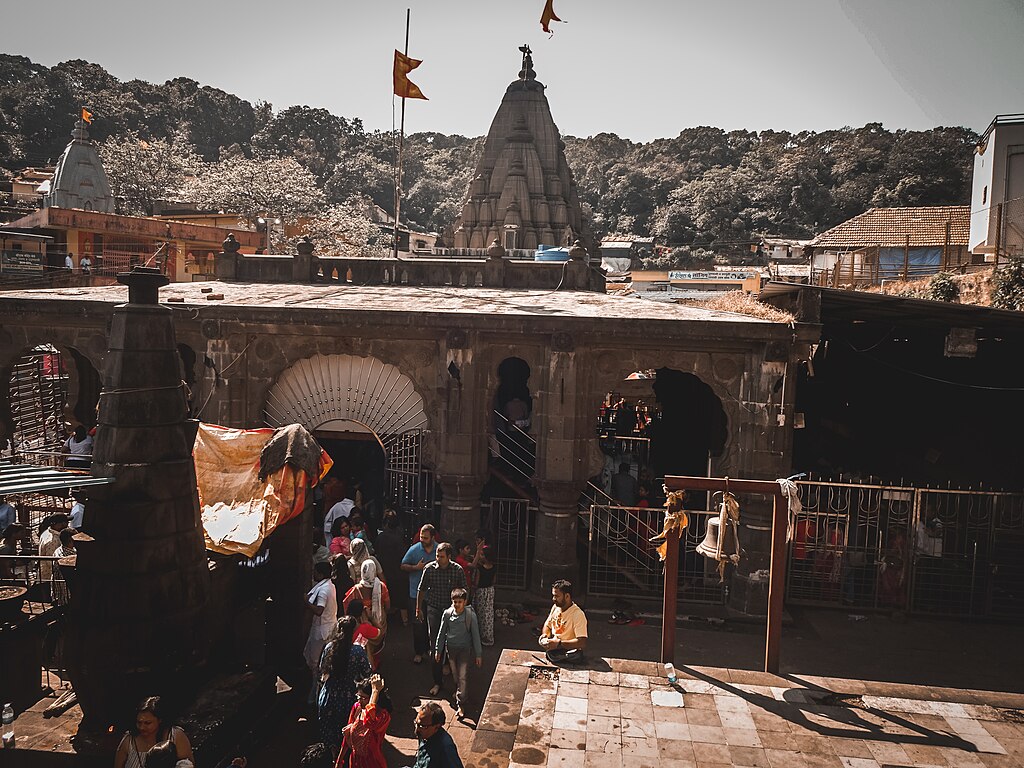
As the first rays of light began to filter through the temple windows, illuminating the ancient stone carvings, the priest turned to me and said, “This isn’t performance. This is conversation.” He explained that each movement has meaning: the clockwise pouring of water represents the cycle of time, the specific arrangement of offerings tells a story, and the timing of each action corresponds to cosmic rhythms.
Later that day, I sat with a group of local women preparing the flower offerings. They worked with quiet concentration, their fingers moving with practiced precision as they sorted marigolds by shade and size. One woman noticed my curiosity and invited me to join them. As I clumsily tried to arrange the flowers, she laughed gently. “It’s not about perfection,” she said. “It’s about attention. Shiva sees the heart behind the offering, not just the flowers.”
The Forest That Prays With You
What makes Bhimashankar truly unique is how the surrounding forest is an active participant in the spiritual experience. Unlike other famous temples where nature is merely a backdrop, here the forest feels like a co-devotee.
During my visit, I discovered several ways the forest integrates with worship:
- Sacred trees: Specific trees are considered manifestations of deities
- Natural springs: Water sources used in rituals
- Animal visitors: Deer and monkeys that move freely through the complex
- Seasonal changes: Rituals that align with forest cycles
One morning, I joined a group of pilgrims for the ritual of circumambulating the temple complex along the river. Unlike the paved paths of urban temples, this parikrama (circumambulation) wound through the forest, with roots forming natural steps and branches creating archways overhead. An elderly pilgrim walking beside me explained that each tree along the path has significance: “This banyan is where Shiva is said to have rested after defeating Tripurasura. That peepal tree marks where the demon’s weapons fell.”
What moved me most was witnessing how seamlessly forest life integrates with worship. During one puja, a group of langurs sat quietly on the temple walls, watching the rituals with what seemed like reverence. When I mentioned this to the head priest, he smiled. “They’ve been coming for centuries. They know the rhythms of worship better than many humans.”
The Night I Spent in the Temple Courtyard
Most visitors leave by sunset, but I decided to stay. The temple provides simple accommodations for pilgrims who wish to experience the temple after the crowds depart. As the last tourists filed out, the temple transformed. The harsh fluorescent lights were turned off, replaced by traditional oil lamps that cast dancing shadows on the ancient walls.
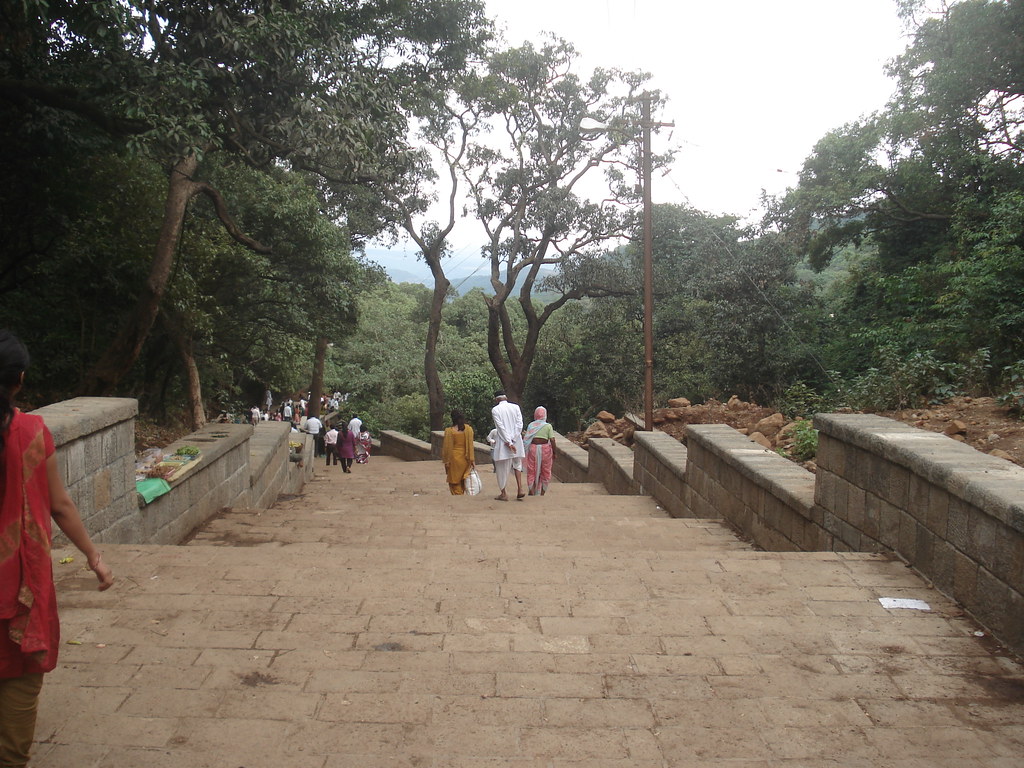
Around 9 PM, I joined a group of sadhus for an informal discussion in the courtyard. One of them noticed my camera and said, “Put it away. The real experience happens when you stop trying to capture it.” He was right. Without the distraction of documenting everything, I began to notice details I’d missed during the day: the way the moonlight highlighted specific carvings, the different sounds of the forest at night versus day, the subtle shift in the scent of incense as the temperature dropped.
As midnight approached, the head priest invited us to witness the rare “Ratri Puja” (night worship). In the dim light of the sanctum, the rituals took on a different quality—more intimate, more personal. The priest explained that night worship connects to Shiva’s aspect as the destroyer of darkness, both literal and metaphorical.
Lying on my thin mat in the temple courtyard that night, listening to the river below and the occasional bell from the sanctum, I understood why people come here seeking transformation. The temple isn’t just a place to visit—it’s a space that changes you if you let it.
The Food That Feeds the Soul
Temple food in India varies widely, but the langar (community kitchen) at Bhimashankar has a special character. What surprised me most was how the food connects to the forest and river.
I spent a morning with the kitchen staff, who welcomed me despite my clumsy attempts to help. The head cook explained that everything served here comes from the surrounding area: rice grown in the river valley, vegetables from local farms, and milk from nearby villages.
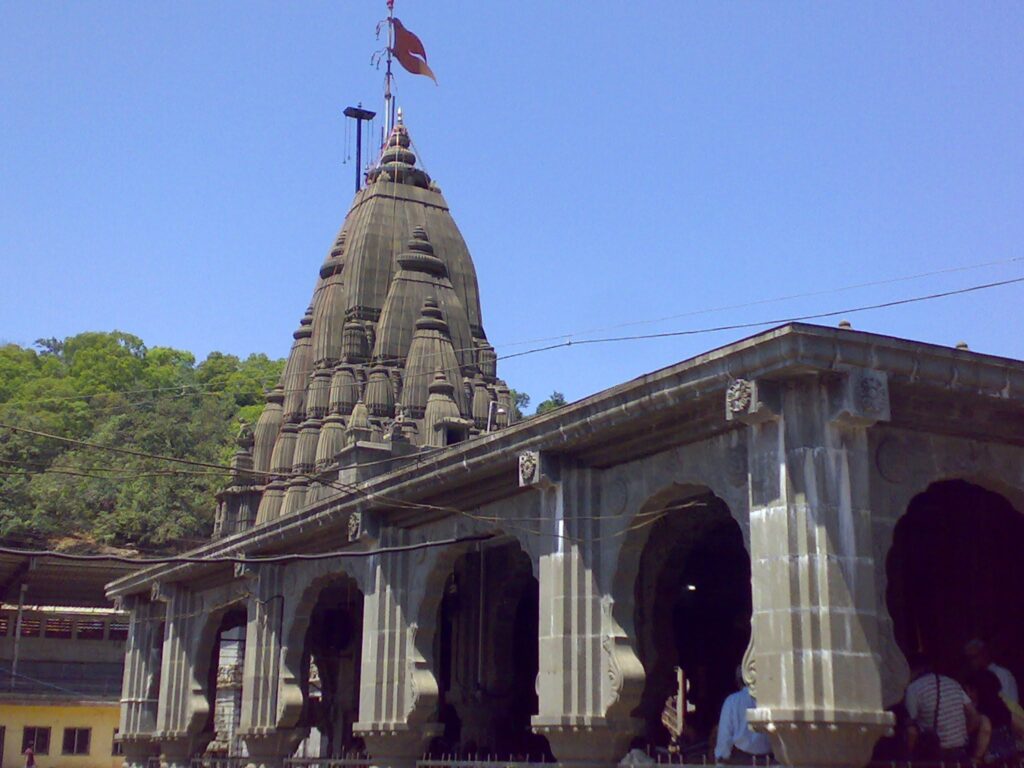
“The food isn’t just nourishment,” she said as she stirred a massive pot of rice. “It’s prasad that carries the energy of this place.” She showed me how they prepare the special “Jal Bhaat” (river rice) that’s unique to this temple—using water directly from the Bhima River and special herbs that grow only along its banks.
What moved me most was learning about the “Anna Daan” (food donation) tradition. Every day, the kitchen prepares extra food specifically for the forest dwellers and tribal communities who live in the surrounding hills. “Shiva is everyone’s god,” the cook explained. “Not just those who can climb the hill to worship.”
During my stay, I was invited to share a meal with a group of tribal devotees who had walked for two days to reach the temple. Their simple offering of rice and lentils, cooked over an open fire, was the most meaningful meal I’ve ever eaten. As we ate with our hands (as is tradition), one elder shared stories of how his community has worshipped here for generations, long before the stone temple was built.
The Hidden History Most Visitors Miss
Most guidebooks focus on Bhimashankar’s religious significance, but its historical layers run deep. I discovered this when I met a retired history professor who volunteers as a temple guide.
Over chai at a small shop near the temple, he shared stories that aren’t in official histories. “The current temple structure dates to the 18th century,” he explained, “but worship here goes back to at least the 3rd century BCE.” He showed me carvings most visitors overlook—subtle symbols that reveal the temple’s evolution through different ruling dynasties.
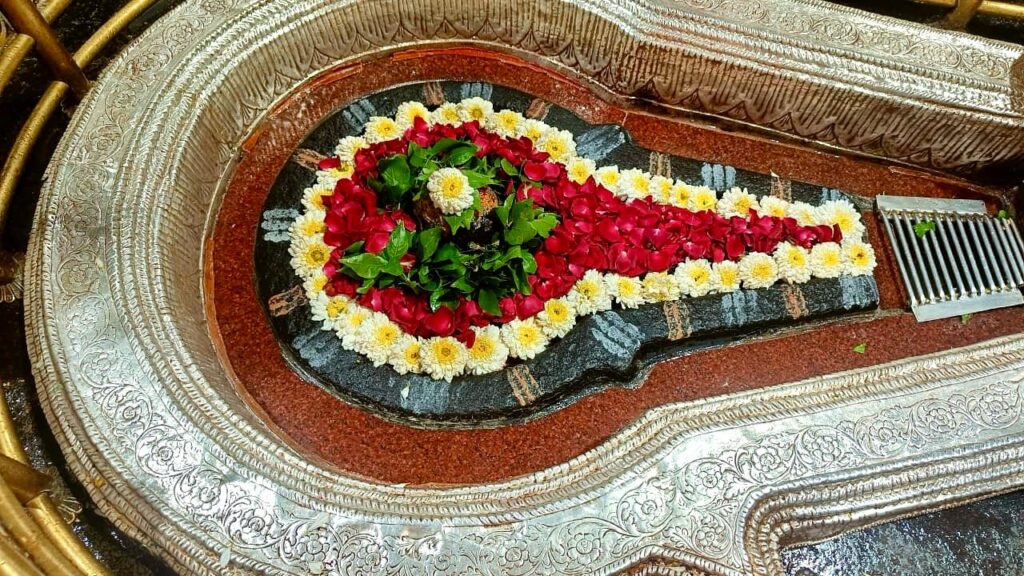
What fascinated me most was learning about the temple’s role during the Maratha Empire. “This wasn’t just a religious center,” he said. “It was a strategic point for controlling the Western Ghats.” He took me to a rarely visited section of the temple where ancient inscriptions detail military movements alongside religious decrees.
One afternoon, he introduced me to a manuscript conservator who works with the temple’s ancient texts. In a small, climate-controlled room, she showed me palm-leaf manuscripts that detail everything from temple rituals to medical treatments used centuries ago. “This knowledge wasn’t hoarded by priests,” she explained. “It was shared with anyone who came seeking healing.”
As I examined the delicate manuscripts, she shared a story that isn’t in any history book: during the 17th century, when the region faced a devastating epidemic, the temple became a center for herbal medicine that saved countless lives. “Devotion here has always been practical,” she said. “Not just theoretical.”
The Mist That Changed Everything
My last morning at Bhimashankar began with an unexpected gift—a thick mist that rolled in from the forest, enveloping the entire temple complex. What could have been a disappointment (no mountain views) turned into the most profound experience of my visit.
As the mist settled, the temple transformed. Sounds became magnified—the dripping of water from the temple spire, the distant chanting, the rustle of leaves. Without visual distractions, my other senses heightened. I found myself noticing details I’d missed during clear days: the texture of the stone under my fingers, the subtle shifts in temperature as I moved between shaded and sunny areas, the complex layers of scent in the air.
An elderly sadhu noticed me standing quietly in the courtyard and joined me. “The mist is Shiva’s blessing,” he said. “When you can’t see the mountain, you must feel it instead.” He led me on a silent walk through the temple complex, guiding my hands to touch carvings I’d only looked at before.
As we moved from shrine to shrine, he described each one in detail, helping me “see” with my hands what I’d previously only seen with my eyes. The experience was humbling and transformative—like discovering a whole new dimension of the temple I thought I knew.
When the mist finally lifted around noon, revealing the stunning view of the surrounding forest, I realized something profound: I appreciated the view more because I’d experienced the temple without it. True understanding, I realized, comes not just from seeing, but from feeling, listening, and connecting.
Practical Wisdom from My Mistakes
My journey to Bhimashankar wasn’t without its hiccups—plenty of which could have been avoided with better preparation. Here’s what I learned the hard way, so you don’t have to:
Getting There:
- The Pune-Nashik highway is the best route, but the last 25 km is narrow and winding
- Shared jeeps from Pune are cheaper but less comfortable than private taxis
- The best time to arrive is early morning to avoid the heat and crowds
- If coming during monsoon, check road conditions—landslides are common
What to Bring:
- Waterproof shoes (the forest paths get muddy)
- A lightweight rain jacket even in summer (the mountain weather changes fast)
- Soft-soled shoes for the temple complex (the marble is slippery when wet)
- A small notebook for taking notes (photography is restricted in many areas)
Temple Etiquette:
- Shoulders and knees must be covered (carry a scarf just in case)
- Remove all leather items (belts, wallets, etc.)
- Silence is expected in the inner sanctum
- Offerings should be purchased from temple-approved vendors
Hidden Gems:
- The “Sound Garden” behind the main temple where wind chimes create natural music
- The early morning river ritual at dawn (5 AM)
- The sunset viewpoint behind the temple that most tourists miss
- The weekly tribal market on Saturdays where you can meet local communities
What NOT to Do:
- Don’t try to negotiate with sadhus (they don’t accept money for blessings)
- Don’t eat non-vegetarian food within 5 km of the temple (it’s considered disrespectful)
- Don’t rush through rituals—observe quietly before participating
- Don’t assume all areas are open (some shrines have restricted access during certain rituals)
The Real Miracle of Bhimashankar
After three days at Bhimashankar, I realized something profound: the real miracle isn’t the ancient architecture or the dramatic location—it’s the living tradition that connects people across generations and backgrounds.
On my last evening, I sat with a group of pilgrims from different parts of India. There was a businessman from Mumbai, a farmer from Tamil Nadu, a student from Delhi, and an elderly couple who had been coming here for 50 years. Despite their different backgrounds, they shared a common language of devotion that needed no translation.
The businessman told me, “I come here every year to reset my priorities. In the city, I measure success by money and power. Here, success is measured by how quietly you can sit and listen.”
As we watched the evening aarti (prayer ceremony), with oil lamps reflecting on the ancient stone walls, I understood what makes Bhimashankar special. It’s not just a Jyotirlinga—it’s a living community where ancient traditions breathe through modern lives.
The head priest found me packing my bag the next morning. “You’re taking something with you,” he said, not as a question but as a statement. I thought he meant a souvenir, but he shook his head. “The forest gives something to everyone who listens. What did it give you?”
I struggled to find words until I realized: Bhimashankar had given me the understanding that true spirituality isn’t about grand gestures, but about attention to the present moment—the way the light hits a stone carving, the sound of water on stone, the feeling of cool marble under bare feet.
As I walked down the mountain road, I glanced back one last time. The temple glowed softly in the morning light, not as a monument to the past, but as a living presence connecting past, present, and future. The forest’s whisper had become part of me, and I knew I’d carry it long after the journey ended.
Why Bhimashankar Belongs on Your Spiritual Journey
If you’re planning a pilgrimage in India, Bhimashankar might not be the first name that comes to mind. Most people head straight for the more famous temples like Kedarnath or Somnath. But here’s why you should consider adding this hidden gem to your spiritual journey:
- It’s accessible: Unlike Himalayan Jyotirlinga temples that require difficult treks, Bhimashankar is reachable by road from major cities
- It’s peaceful: Without the massive crowds of more famous temples, you can actually experience the spiritual energy
- It’s immersive: The forest setting creates a multi-sensory experience that engages more than just your eyes
- It’s authentic: The rituals here feel less commercialized, more connected to genuine spiritual practice
- It’s transformative: The combination of natural beauty and sacred space creates a powerful environment for reflection
During my visit, I met a young woman named Priya who was traveling alone on her first spiritual journey. “I almost skipped this place,” she admitted. “But now I understand why it’s special. It’s not about checking off a list of famous temples—it’s about finding the place that speaks to you.”
Final Thoughts for Future Pilgrims
If you’re planning to visit Bhimashankar, here’s my heartfelt advice:
Come with empty hands and an open heart. This isn’t a tourist destination—it’s a living spiritual ecosystem. Don’t try to see everything in one day; instead, choose one ritual or area to focus on deeply. Talk to the people, not just about the temple, but about their lives. Eat the temple food with gratitude. Sit quietly and listen—sometimes the most important teachings come in silence.
Most importantly, leave your expectations at the door. Bhimashankar isn’t what’s in the guidebooks or on Instagram. It’s something you discover through patient presence, one step, one breath, one moment at a time.
As I walked away from Bhimashankar, I thought about the elderly sadhu who had guided me through the mist. I never learned his name, but his simple words—”When you can’t see the mountain, you must feel it instead”—had become my guiding principle. In a world obsessed with capturing experiences, Bhimashankar had taught me the deeper value of simply being present.
The forest’s whisper continues to guide me, reminding me that true spirituality isn’t about reaching destinations, but about transforming how we travel the journey. And that, perhaps, is the greatest gift any temple can offer—a new way of seeing the sacred in everything.
So if you’re planning your next pilgrimage in India, consider adding Bhimashankar to your list. Not because it’s famous, but because it’s real. Not because it’s easy, but because it’s authentic. And not because it’s on someone else’s must-see list, but because it might just be the place that speaks to your soul in a way no other temple can.
FAQs on Bhimashankar Temple
1. Where is Bhimashankar Temple located?
It is located in the Sahyadri hills, about 110 km from Pune, Maharashtra.
2. Why is Bhimashankar Temple famous?
It is one of the 12 Jyotirlingas of Lord Shiva and also the origin point of the Bhima River.
3. What is the history behind Bhimashankar Temple?
According to legend, Lord Shiva manifested here to defeat the demon Tripurasura, making the site sacred.
4. What are the temple timings?
The temple is generally open from 4:30 AM to 9:30 PM, with daily aarti and rituals.
5. How can devotees reach Bhimashankar Temple?
The nearest city is Pune. From there, buses, taxis, and trekking routes lead to the temple. The nearest railway station is Pune Junction, and the nearest airport is Pune Airport.
6. Is trekking involved to reach Bhimashankar Temple?
Yes, there are trekking trails through the forest for pilgrims, though road access is also available.
7. What is the best time to visit Bhimashankar Temple?
The best season is October to March. Monsoon (June–September) is also popular for trekking, though paths can be slippery.
8. Are there accommodations near the temple?
Yes, guest houses, lodges, and dharamshalas are available around the temple for pilgrims.
9. Which festivals are celebrated at Bhimashankar Temple?
Major festivals include Maha Shivaratri, Kartik Poornima, and Shravan month, attracting thousands of devotees.
10. Can non-Hindus visit Bhimashankar Temple?
Yes, visitors of all faiths can enter the temple premises, but only Hindus are allowed inside the sanctum.

